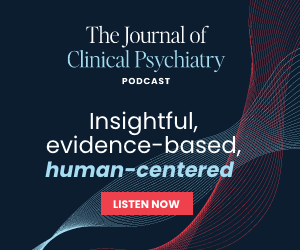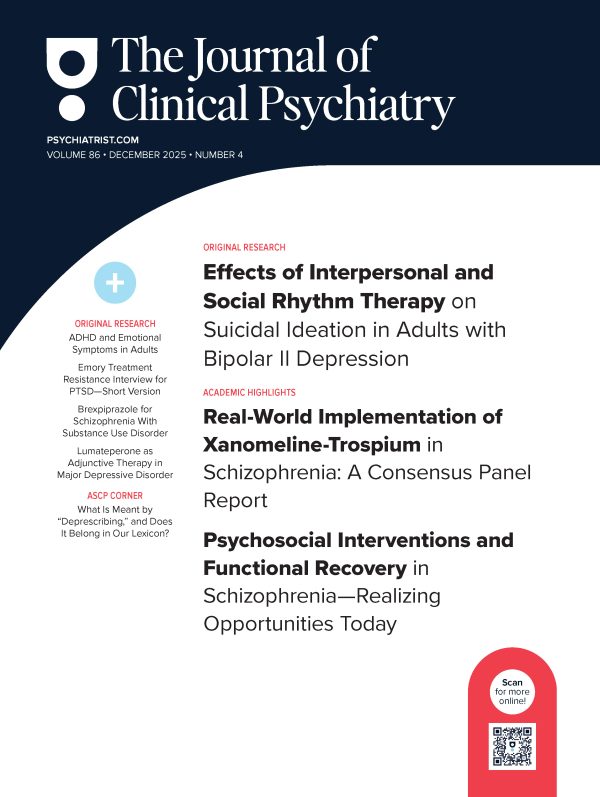Abstract
Objective: Antidepressants are commonly prescribed, yet understanding of consequences for cardiovascular disease (CVD) risk is less well-developed. We examined associations of antidepressants (selective serotonin reuptake inhibitors [SSRIs], serotonin norepinephrine reuptake inhibitors [SNRIs], other antidepressants) with incident CVD in women Veterans, a population with a high psychiatric and CVD risk burden.
Methods: Using Veterans Health Administration (VHA) electronic health records, we identified women Veterans who were VHA patients from January 1, 2000, to December 31, 2019. Exclusion criteria included <12 months of baseline data before index visit, prior CVD or antidepressant prescription, and no encounters after index visit. Antidepressant prescriptions were documented in pharmacy data. Our primary outcome was an incident CVD composite, comprising first-onset ischemic heart disease, stroke, atrial fibrillation/flutter, heart failure/ cardiomyopathy, and pulmonary hypertension based on diagnostic codes.
Results: Women Veterans (N = 609,546) had a mean age of 41.3 years. During mean follow-up of 8.8 years, 40.1% of women were prescribed SSRIs, 18.2% SNRIs, and 38.6% other antidepressants; 9.2% developed CVD. Marginal structural modeling was used to de-confound associations of antidepressants with incident CVD, accounting for demographics, VHA engagement, traditional CVD risk factors, and psychiatric disorders. SSRIs, SNRIs, and other antidepressants (vs no antidepressants) were associated with lower incidence of the CVD composite, as well as ischemic heart disease and stroke (relative risk: 0.27–0.76). Additionally, the inverse association between antidepressants and CVD was larger for women with major depressive disorder, posttraumatic stress disorder, and anxiety disorders.
Conclusion: As antidepressants are widely prescribed in the VHA and beyond, these results are encouraging for patients receiving this care.
J Clin Psychiatry 2025;86(2):24m15647
Author affiliations are listed at the end of this article.
Members Only Content
This full article is available exclusively to Professional tier members. Subscribe now to unlock the HTML version and gain unlimited access to our entire library plus all PDFs. If you’re already a subscriber, please log in below to continue reading.
References (43)

- VA/DoD Clinical Practice Guideline. The Management of Major Depressive Disorder. US Government Printing Office; 2022.
- American Psychological Association. Clinical Practice Guideline for the Treatment of Depression Across Three Age Cohorts. American Psychological Association; 2019. Accessed May 1, 2024. https://www.apa.org/depressionguideline
- VA/DoD Clinical Practice Guideline. Management of Posttraumatic Stress Disorder and Acute Stress Disorder Work Group. US Government Printing Office; 2023.
- American Psychological Association. Clinical Practice Guideline for the Treatment of PTSD. American Psychological Association; 2017.
- Melaragno AJ. Pharmacotherapy for anxiety disorders: from first-line options to treatment resistance. Focus. 2021;19(2):145–160. PubMed CrossRef
- Krystal JH, Davis LL, Neylan TC, et al. It is time to address the crisis in the pharmacotherapy of posttraumatic stress disorder: a consensus statement of the PTSD psychopharmacology working group. Biol Psychiatry. 2017;82(7):e51–e59. PubMed CrossRef
- Shiner B, Leonard C, Gui J, et al. Measurement strategies for evidence-based antidepressants for posttraumatic stress disorder delivery: trends and associations with patient-reported outcomes. Adm Policy Ment Health. 2021;48(1):70–87. PubMed CrossRef
- Gupta N, Bhalla IP, Rosenheck RA. Treatment of veterans with psychiatric diagnoses nationally in the veterans health administration: a comparison of service delivery by mental health specialists and other providers. Adm Policy Ment Health. 2019;46(3):380–390. PubMed CrossRef
- Wiechers IR, Kirwin PD, Rosenheck RA. Increased risk among older veterans of prescribing psychotropic medication in the absence of psychiatric diagnoses. Am J Geriatr Psychiatry. 2014;22(6):531–539. PubMed CrossRef
- Kahl KG, Stapel B, Correll CU. Psychological and psychopharmacological interventions in psychocardiology. Front Psychiatry. 2022;13:831359. PubMed CrossRef
- Piña IL, Di Palo KE, Ventura HO. Psychopharmacology and cardiovascular disease. J Am Coll Cardiol. 2018;71(20):2346–2359. PubMed CrossRef
- Dimoula A, Fotellis D, Aivalioti E, et al. Off-target effects of antidepressants on vascular function and structure. Biomedicines. 2021;10(1):56. PubMed CrossRef
- Mortensen JK, Andersen G. Safety considerations for prescribing SSRI antidepressants to patients at increased cardiovascular risk. Expert Opin Drug Saf. 2022;21(4):467–475. PubMed CrossRef
- Gan Y, Gong Y, Tong X, et al. Depression and the risk of coronary heart disease: a meta-analysis of prospective cohort studies. BMC Psychiatry. 2014;14:371. PubMed CrossRef
- Akosile W, Colquhoun D, Young R, et al. The association between post-traumatic stress disorder and coronary artery disease: a meta-analysis. Australas Psychiatry. 2018;26(5):524–530. PubMed CrossRef
- Emdin CA, Odutayo A, Wong CX, et al. Meta-analysis of anxiety as a risk factor for cardiovascular disease. Am J Cardiol. 2016;118(4):511–519. PubMed CrossRef
- Carpenter JK, Andrews LA, Witcraft SM, et al. Cognitive behavioral therapy for anxiety and related disorders: a meta-analysis of randomized placebo-controlled trials. Depress Anx. 2018;35(6):502–514. PubMed CrossRef
- Robins JM, Hernán MA, Brumback B. Marginal structural models and causal inference in epidemiology. Epidemiology. 2000;11(5):550–560. PubMed CrossRef
- Han JK, Yano EM, Watson KE, et al. Cardiovascular care in women veterans: a call to action. Circulation. 2019;139(8):1102–1109. PubMed CrossRef
- Ebrahimi R, Lynch KE, Beckham JC, et al. Association of posttraumatic stress disorder and incident ischemic heart disease in women veterans. JAMA Cardiol. 2021;6(6):642–651. PubMed CrossRef
- Fihn SD, Francis J, Clancy C, et al. Insights from advanced analytics at the Veterans Health Administration. Health Aff. 2014;33(7):1203–1211. PubMed CrossRef
- Von Elm E, Altman DG, Egger M, et al. The Strengthening the Reporting of Observational Studies in Epidemiology (STROBE) statement: guidelines for reporting observational studies. Lancet. 2007;370(9596):1453–1457. PubMed CrossRef
- Gaffey AE, Rosman L, Burg MM, et al. Posttraumatic stress disorder, antidepressant use, and hemorrhagic stroke in young men and women: a 13-year cohort study. Stroke. 2021;52(1):121–129. PubMed CrossRef
- Rosman L, Lampert R, Ramsey CM, et al. Posttraumatic stress disorder and risk for early incident atrial fibrillation: a prospective cohort study of 1.1 million young adults. J Am Heart Assoc. 2019;8(19):e013741. PubMed CrossRef
- Rosman L, Sico JJ, Lampert R, et al. Posttraumatic stress disorder and risk for stroke in young and middle-aged adults: a 13-year cohort study. Stroke. 2019;50(11):2996–3003. PubMed CrossRef
- Ebrahimi R, Dennis PA, Alvarez CA, et al. Posttraumatic stress disorder is associated with elevated risk of incident stroke and transient ischemic attack in women veterans. J Am Heart Assoc. 2024;13(5):e033032. PubMed CrossRef
- Fu W, Simonoff JS. Survival trees for left-truncated and right-censored data, with application to time-varying covariate data. Biostatistics. 2017;18(2):352–369. PubMed CrossRef
- Cole SR, Hernán MA. Constructing inverse probability weights for marginal structural models. Am J Epidemiol. 2008;168(6):656–664. PubMed CrossRef
- Bender A, Groll A, Scheipl F. A generalized additive model approach to time-to event analysis. Stat Model Int J. 2018;18(3–4):299–321. CrossRef
- Bender A, Scheipl F. Pammtools: Piece-Wise Exponential Additive Mixed Modeling Tools. arXiv; 2018. doi:10.48550/arXiv.1806.01042. CrossRef
- Frayne SM, Phibbs CS, Saechao F, et al. Sourcebook: Women veterans in the Veterans Health Administration. In: Volume 4: Longitudinal Trends in Sociodemographics, Utilization, Health Profile, and Geographic Distribution. Women’s Health Evaluation Initiative, Women’s Health Services, Veterans Health Administration. Department of Veterans Affairs; 2018.
- Runnals JJ, Garovoy N, McCutcheon SJ, et al. Systematic review of women veterans’ mental health. Womens Health Issues. 2014;24(5):485–502. PubMed CrossRef
- Bernardy NC, Lund BC, Alexander B, et al. Gender differences in prescribing among veterans diagnosed with posttraumatic stress disorder. J Gen Intern Med. 2013;28(s2):542–548. PubMed CrossRef
- Noordam R, Aarts N, Leening MJ, et al. Use of antidepressants and the risk of myocardial infarction in middle-aged and older adults: a matched case-control study. Eur J Clin Pharmacol. 2016;72(2):211–218. PubMed CrossRef
- Alqdwah-Fattouh R, Rodríguez-Martín S, de Abajo FJ, et al. Differential effects of antidepressant subgroups on risk of acute myocardial infarction: a nested case–control study. Br J Clin Pharmacol. 2020;86(10):2040–2050. PubMed CrossRef
- Scherrer JF, Garfield LD, Lustman PJ, et al. Antidepressant drug compliance: reduced risk of MI and mortality in depressed patients. Am J Med. 2011;124(4):318–324. PubMed CrossRef
- Kimmel SE, Schelleman H, Berlin JA, et al. The effect of selective serotonin re uptake inhibitors on the risk of myocardial infarction in a cohort of patients with depression. Br J Clin Pharmacol. 2011;72(3):514–517. PubMed CrossRef
- Cohen BE, Edmondson D, Kronish IM. State of the art review: depression, stress, anxiety, and cardiovascular disease. Am J Hypertens. 2015;28(11):1295–1302. PubMed CrossRef
- Maslej MM, Bolker BM, Russell MJ, et al. The mortality and myocardial effects of antidepressants are moderated by preexisting cardiovascular disease: a meta analysis. Psychother Psychosom. 2017;86(5):268–282. PubMed CrossRef
- Konttinen H, Kilpi F, Moustgaard H, et al. Socioeconomic position and antidepressant use as predictors of coronary heart disease mortality: a population based registry study of 362,271 Finns. Psychosom Med. 2016;78(2):144–152. PubMed CrossRef
- Monte S, Macchia A, Romero M, et al. Antidepressants and cardiovascular outcomes in patients without known cardiovascular risk. Eur J Clin Pharmacol. 2009;65(11):1131–1138. PubMed CrossRef
- Kim K, Kang S, Nam CM, et al. A marginal structural model to estimate the effect of antidepressant medication treatment on major cardiovascular events among people with post-traumatic stress disorder. Psychol Med. 2023;53(16):7837–7846. PubMed CrossRef
- Brookhart MA, Schneeweiss S, Rothman KJ, et al. Variable selection for propensity score models. Am J Epidemiol. 2006;163(12):1149–1156. PubMed CrossRef






